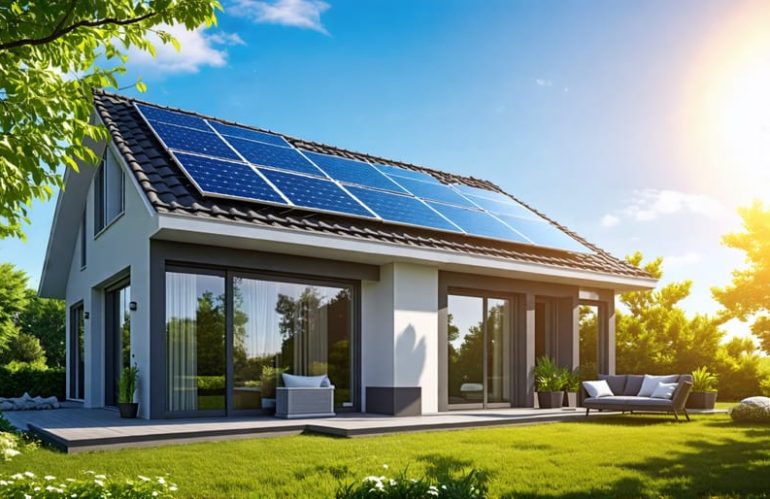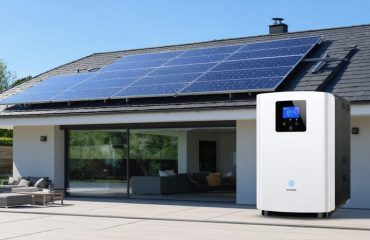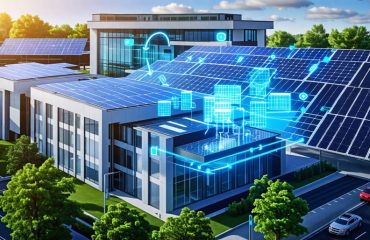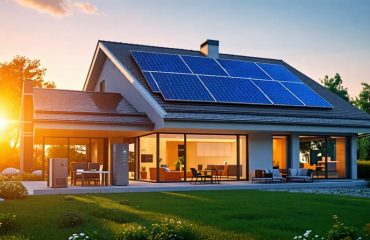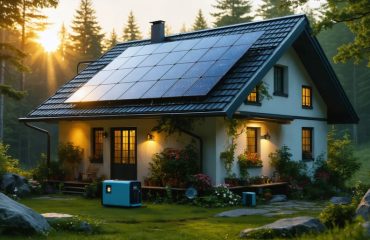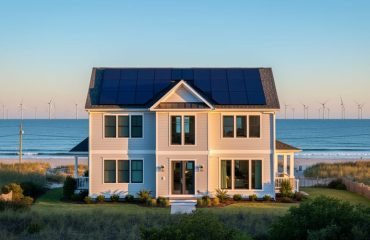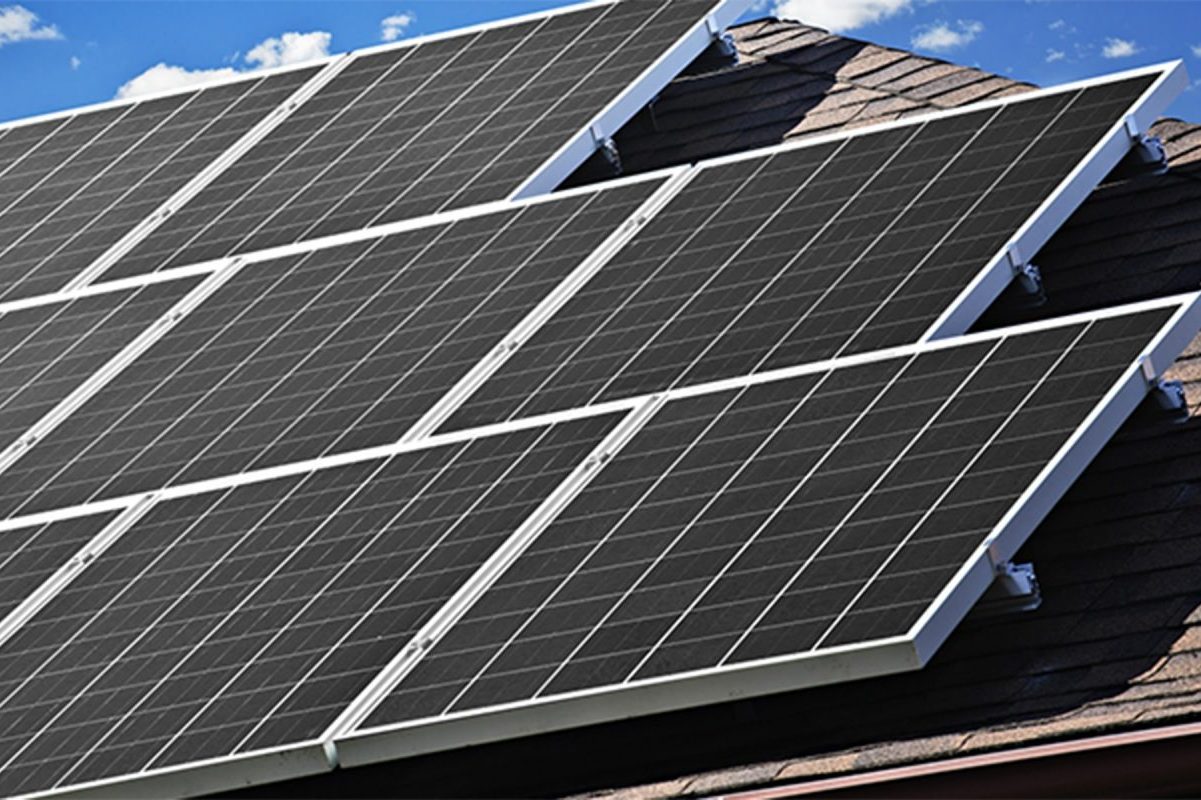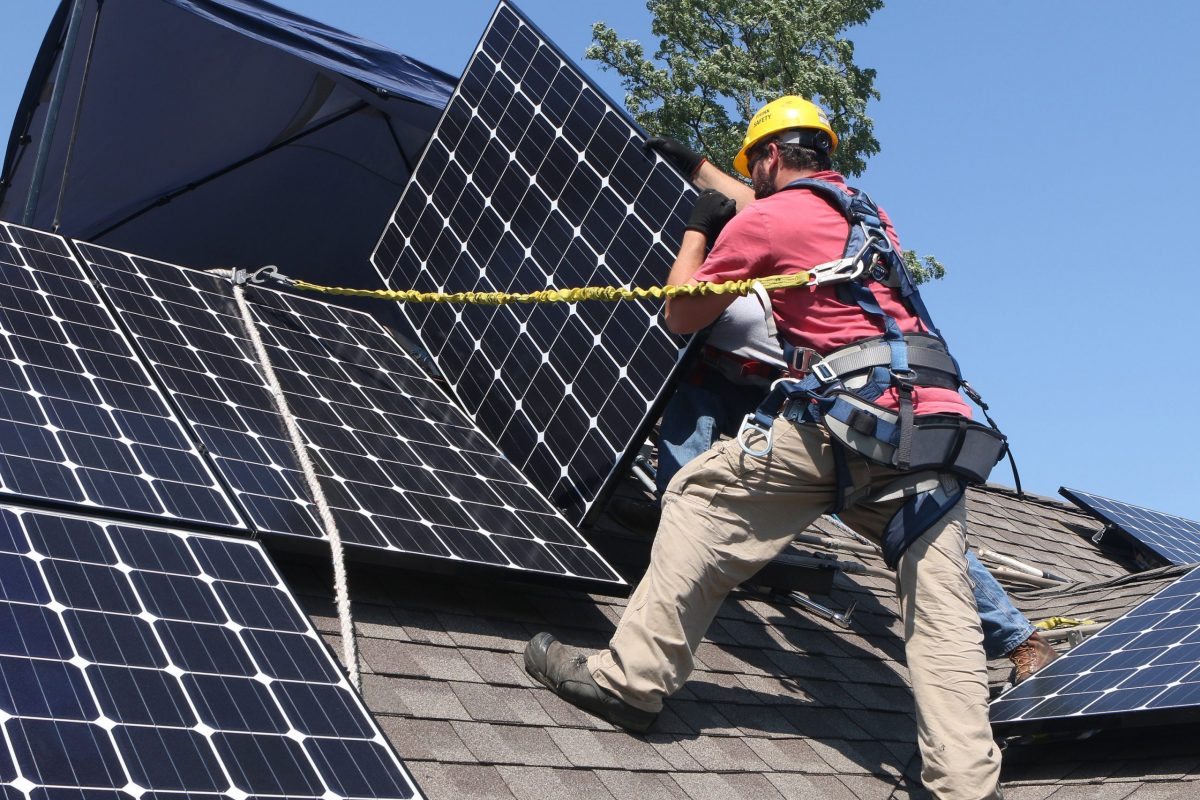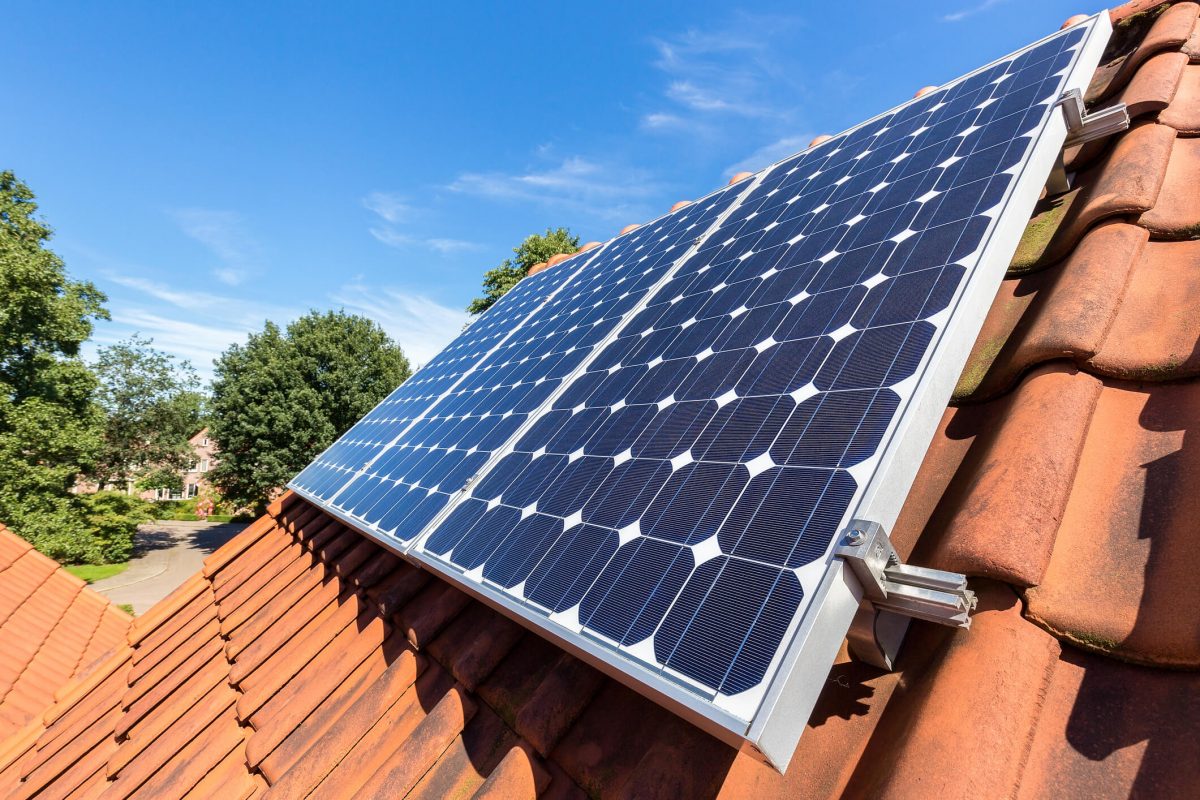Imagine a world where your home is powered entirely by the sun, free from the constraints of the electrical grid. With an independent solar system, you can achieve true energy independence, harnessing clean, renewable energy to meet all your electricity needs. No longer will you be at the mercy of rising utility rates or vulnerable to power outages. Instead, you’ll enjoy the peace of mind that comes with generating your own power, right from your rooftop. Plus, by going solar, you’ll be making a meaningful contribution to a more sustainable future, reducing your carbon footprint and helping combat climate change. So if you’re ready to take control of your energy destiny, an independent solar system may be the perfect solution. In this article, we’ll explore how these systems work, their key benefits, and what you need to know to determine if solar is right for your home.
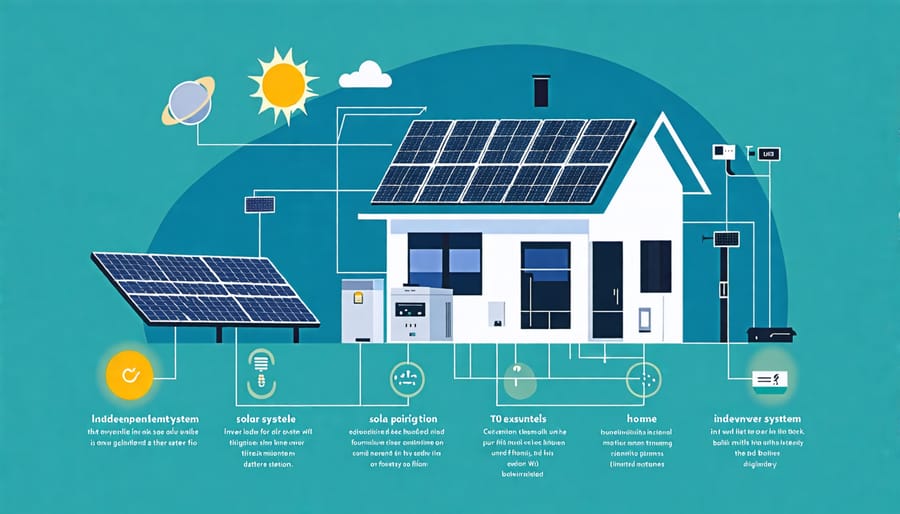
How Independent Solar Systems Work
Solar Panels
Solar panels are the essential components of independent solar systems that harness the sun’s energy and convert it into usable electricity. These panels are made up of photovoltaic (PV) cells, which are typically constructed from silicon. When sunlight hits the PV cells, it excites the electrons within the silicon, causing them to flow and generate an electric current. This process, known as the photovoltaic effect, is the fundamental principle behind solar energy production.
Modern solar panels are designed to be highly efficient, with some models capable of converting over 20% of the sunlight they receive into electricity. The electricity generated by the solar panels is in the form of direct current (DC), which is then passed through an inverter to convert it into alternating current (AC) that can power your home appliances and electronics. As technology advances, solar panels are becoming increasingly more affordable and efficient, making them an attractive option for homeowners looking to embrace clean, renewable energy and reduce their reliance on the grid.
Inverters
Inverters are a crucial component in independent solar systems, responsible for converting the direct current (DC) electricity generated by solar panels into the alternating current (AC) electricity used by most household appliances. Without an inverter, the solar energy captured by the panels would be incompatible with the electrical grid and the devices in your home. Inverters seamlessly bridge this gap, allowing you to harness the sun’s power and utilize it efficiently. They come in various sizes and types, such as string inverters, microinverters, and hybrid inverters, each with its own advantages depending on your specific solar setup and energy needs.
Batteries and Energy Storage
Batteries play a crucial role in independent solar systems, enabling homeowners to store excess energy generated during sunny days for use when the sun isn’t shining. When your solar panels produce more electricity than your home needs, the surplus is sent to your battery storage system. Later, when your panels aren’t generating enough power, such as at night or on cloudy days, your home can draw energy from the stored reserves in the batteries. This means you can rely on clean, renewable energy around the clock without having to depend on the grid. Batteries store excess solar energy, providing a reliable and sustainable solution for your home’s power needs. With the right battery capacity, you can even power your home for days during extended periods of cloudy weather or in the event of a power outage.
Advantages of Going Off-Grid with Solar
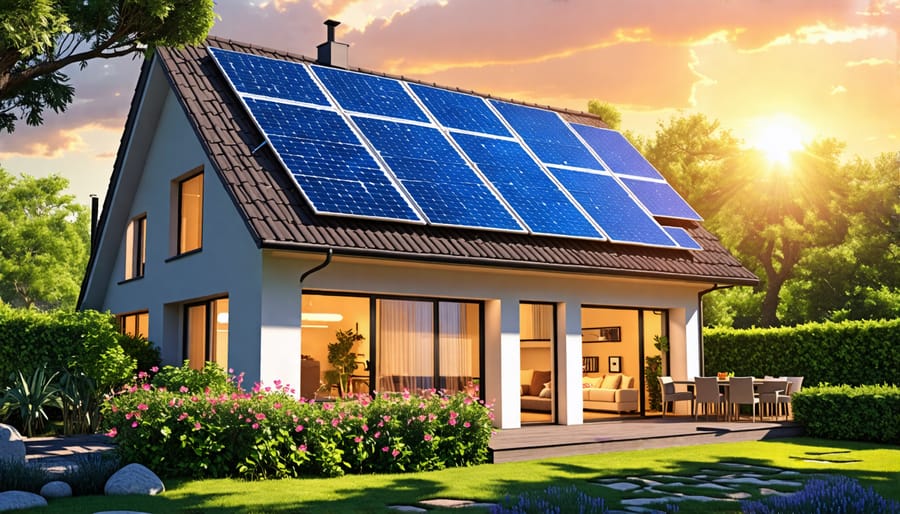
Energy Independence and Reliability
Generating your own power with an independent solar system protects you against grid outages and provides self-sufficiency. With solar panels on your roof, you can harness the sun’s energy to power your home, even during blackouts or emergencies. This Energy Independence and Reliability means you’re not at the mercy of the utility company or vulnerable to rising energy costs. Solar battery storage takes this a step further by allowing you to store excess energy for later use, ensuring you have a reliable power supply day and night. By reducing your reliance on the grid, you gain greater control over your energy usage and costs. Plus, with proper system sizing and installation, solar systems are incredibly dependable, often lasting 25-30 years with minimal maintenance. So not only do you enjoy the peace of mind that comes with energy independence, but you also contribute to a more sustainable future by using clean, renewable energy. Whether you’re looking to save money, prepare for emergencies, or reduce your carbon footprint, an independent solar system empowers you to take charge of your energy needs.
Long-Term Financial Savings
One of the most compelling long-term benefits of installing an independent solar system is the potential for significant financial savings. By generating your own clean electricity, you can drastically reduce or even eliminate your monthly electric bills. Over the course of 20-25 years, which is the typical lifespan of solar panels, these savings can add up to tens of thousands of dollars.
Moreover, the cost of solar technology has dropped dramatically in recent years, making it more accessible and cost-effective than ever before. In many cases, the upfront investment in a solar system can be recouped through energy savings within 5-10 years. After that, the electricity generated is essentially free, providing a hedge against rising utility rates.
Additionally, many states offer incentives like tax credits, rebates, and net metering programs that can further enhance the financial benefits of going solar. By taking advantage of these incentives, homeowners can often see an even faster return on their investment.
In the long run, an independent solar system not only insulates you from unpredictable energy costs but can also increase your home’s value. Studies have shown that homes with solar panels sell faster and at a premium compared to non-solar homes. So, when viewed as a long-term investment, solar offers a win-win for your wallet and the planet.
Environmental Sustainability
Independent solar systems offer a clean, renewable energy solution that significantly reduces your carbon footprint. By harnessing the power of the sun, you can generate your own electricity without relying on fossil fuels that contribute to greenhouse gas emissions and climate change. Solar energy is an abundant, inexhaustible resource that does not produce any harmful pollutants or emissions during operation. By going solar, you are making a positive impact on the environment and helping to create a more sustainable future for generations to come.
In addition to reducing your reliance on non-renewable energy sources, installing an independent solar system can also help conserve water resources. Traditional power plants often require vast amounts of water for cooling, while solar panels do not need any water to generate electricity. By choosing solar, you are not only reducing your carbon footprint but also minimizing your water footprint.
Furthermore, the manufacturing process of solar panels has become increasingly environmentally friendly over the years. Many solar panel manufacturers now prioritize sustainable practices, such as using recycled materials and minimizing waste during production. As technology advances, the environmental impact of solar panel production continues to decrease, making solar an even more eco-friendly choice for powering your home.
Is an Independent Solar System Right for You?
Assessing Your Home’s Solar Potential
When considering an independent solar system for your home, it’s crucial to evaluate your property’s solar potential. The first factor to examine is your roof’s size and orientation. A south-facing roof with ample space for solar panels is ideal, as it maximizes sun exposure throughout the day. The angle of your roof also plays a role – a tilt between 30 and 45 degrees is optimal for capturing the most sunlight.
Next, assess any shading on your roof from nearby trees, buildings, or other obstructions. Shading can significantly reduce the efficiency of your solar panels, so it’s essential to have a relatively unobstructed view of the sky. If you have minor shading issues, consider trimming trees or adjusting the placement of your panels to minimize the impact.
Solar exposure is another key factor in Assessing Your Home’s Solar Potential. The amount of sunlight your home receives varies based on your geographical location, climate, and seasonal changes. Generally, homes in sunny regions like the Southwest have the highest solar potential, but most areas of the United States receive enough sunlight to make solar a viable option.
To get a more precise understanding of your home’s solar potential, consult with a professional solar installer who can conduct a thorough site assessment and provide personalized recommendations based on your unique property and energy needs.
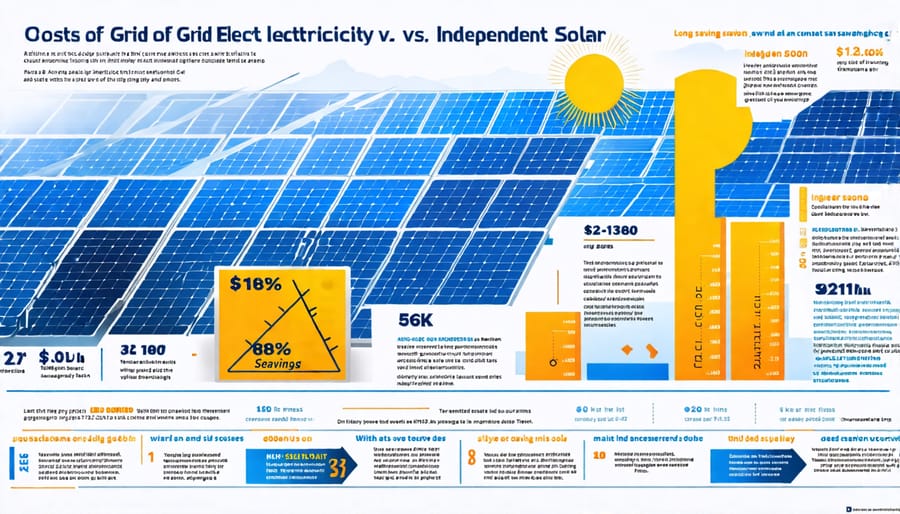
Sizing Your Solar System
To determine the appropriate size for your independent solar system, start by calculating your household’s average daily energy consumption in kilowatt-hours (kWh). Review your utility bills from the past year and divide the total annual energy usage by 365 days. Consider any planned changes in energy usage, such as adding electric appliances or an electric vehicle.
Next, assess your location’s solar potential using online tools that provide average daily sunlight hours based on geographic data. Divide your daily energy needs by the average sunlight hours to estimate the necessary solar array size in kilowatts (kW).
For example, if your household consumes 30 kWh per day and receives an average of 5 peak sunlight hours, you would need a 6 kW solar array (30 kWh ÷ 5 hours = 6 kW). It’s recommended to add a 20% buffer to account for system inefficiencies and battery storage capacity.
Consult with a professional solar installer who can assess your specific needs, roof space, and budget to design a tailored system that optimizes performance and maximizes your energy independence. They’ll help you select the right solar panels, inverters, and batteries to create a reliable and efficient off-grid solution.
Conclusion
Independent solar systems offer homeowners a path to energy independence, financial savings, and a more sustainable lifestyle. By generating your own clean, renewable power, you can insulate yourself from rising utility costs and potential grid outages. Over time, the savings on your electric bills can offset the initial investment in a solar system. Plus, any excess power your system generates can often be sold back to the grid for credits.
Beyond the personal benefits, going solar is an important way to reduce your environmental impact and combat climate change. By choosing solar, you’re helping to decrease reliance on fossil fuels and limit greenhouse gas emissions.
If you’re intrigued by the potential of solar for your home, the first step is to get a professional assessment of your property’s solar potential. Reputable solar installers can evaluate your energy needs, roof orientation and condition, shading, and other factors to design an optimal system. Many offer free estimates and flexible financing options to make going solar an achievable goal.
The future is bright for home solar power. With steady advancements in solar technology, increasing affordability, and growing environmental awareness, there’s never been a better time to explore this clean energy solution. Take the first step today to see if independent solar is right for you.

